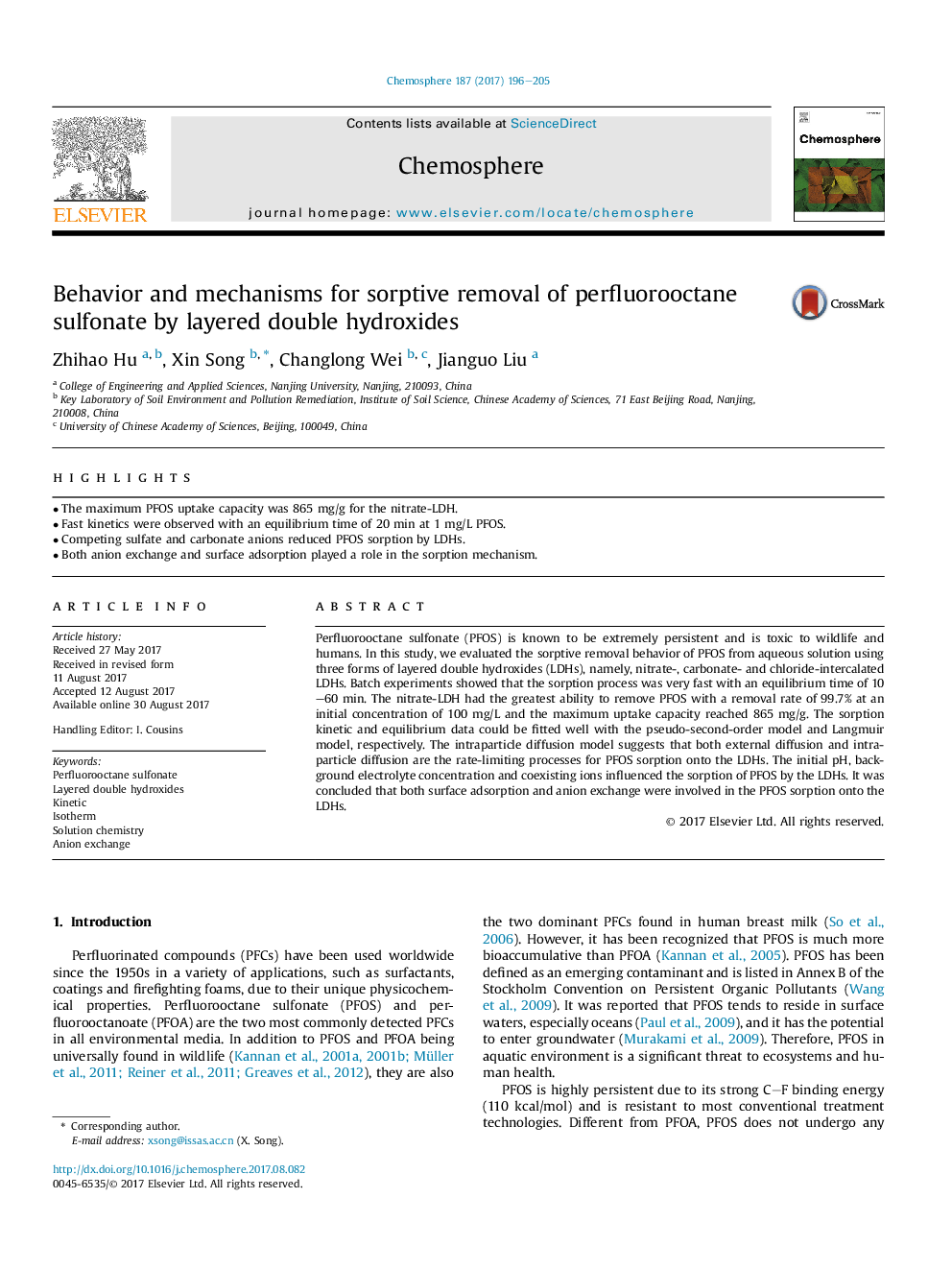| Article ID | Journal | Published Year | Pages | File Type |
|---|---|---|---|---|
| 5746418 | Chemosphere | 2017 | 10 Pages |
â¢The maximum PFOS uptake capacity was 865 mg/g for the nitrate-LDH.â¢Fast kinetics were observed with an equilibrium time of 20 min at 1 mg/L PFOS.â¢Competing sulfate and carbonate anions reduced PFOS sorption by LDHs.â¢Both anion exchange and surface adsorption played a role in the sorption mechanism.
Perfluorooctane sulfonate (PFOS) is known to be extremely persistent and is toxic to wildlife and humans. In this study, we evaluated the sorptive removal behavior of PFOS from aqueous solution using three forms of layered double hydroxides (LDHs), namely, nitrate-, carbonate- and chloride-intercalated LDHs. Batch experiments showed that the sorption process was very fast with an equilibrium time of 10-60Â min. The nitrate-LDH had the greatest ability to remove PFOS with a removal rate of 99.7% at an initial concentration of 100Â mg/L and the maximum uptake capacity reached 865Â mg/g. The sorption kinetic and equilibrium data could be fitted well with the pseudo-second-order model and Langmuir model, respectively. The intraparticle diffusion model suggests that both external diffusion and intraparticle diffusion are the rate-limiting processes for PFOS sorption onto the LDHs. The initial pH, background electrolyte concentration and coexisting ions influenced the sorption of PFOS by the LDHs. It was concluded that both surface adsorption and anion exchange were involved in the PFOS sorption onto the LDHs.
